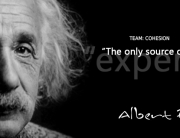Every journey begins with the discovery of self. Situational awareness is important. Not to be confused with sympathy – possessing the ability to listen effectively and accurately enough to put yourself in the other person’s shoes. This is not necessarily to agree with them, but to truly understand the situation from their point-of-view in order to improve communication, problem-solving, and trust. Self-awareness is crucial.
The safety of every flight relies on the necessary knowledge of a multitude of different data, and the mastery of very demanding skills. But without the knowledge and mastery of one’s own limits, emotions and mental state – the core foundation of safety is put in jeopardy. The human factor, the Liveware, is the center of the safety equation. This is where we start our study.
“As scores of citizens and neighbours crowded onto the street to watch and stare, firefighters and paramedics rescued a city boy from underneath a compact vehicle Sunday around 2:35 p.m. […]
[…] The cyclist suffered very serious internal injuries and was taken to the District Hospital and subsequently transported to a Toronto area hospital for treatment of his injuries.”
The bat-phone ring resounded throughout the whole base hangar a little after 18h… Dispatch had a call for us.
Although not too many details were provided at first, the urgency could be heard in the voice of our planner as we informed her that the weather in Toronto was sufficient for us to go and informed us of the verdict: The trip is a go, you guys are going to end your shift in Toronto.
At first, the frustration sets in. Why us? Why not wait a little bit more and have our night shift pilots complete this call? The answer quickly came as the phone rang again, and our dispatcher provided a little inside scoop on what was really going on..
“6 year old kid, hit by an SUV earlier today. Needs urgent transport to Sick Kids hospital.”
All the frustration I had melted away instantly, only to be replaced by a sick feeling in my guts. Why do things like that happen? A 6 year old, almost robbed of his life by a careless driver… and dearly paying for another man’s mistake.
Resolve started to set in as my partner and I started getting ready for the trip. So what? it was going to get us stuck in Toronto and away from our loved ones for a night. It was well worth the life of a little boy who did nothing to deserve such a fate.
Resolve… resolve to do what? Resolve to be part of the solution, to be part of the compassionate, helping hand that was going to give this child a second chance at life. Timing for our duty day was going to be tight, but it was for a good cause.
Wasn’t it?
This kind of story happens more than we want to admit. It also remains a hotly contested subject amongst the professional middle. How much can one let himself get involved before emotions take over, and a sympathetic or emotional decision rather than rational leads to more tragedy?
Multiple examples of this can be found throughout the history of aviation, where a flight ended in more tragedy because of an emotional, compassionate response at the sight of a fellow human in dire need.
Pilots, people who are trained from the start the think in the most rational manner possible, brainwashed to operate based on a modus operandi that was set in stone for legal and safety reasons, only remain people. Emotional, human to the very core of the definition, and often passionate people.
And so there it is. The million dollar question. How does one make safe – safer, only to use somebody else’s words. How do you make a pilot, a person, keep all his humanness aside and perform the mission that he or she has been trained for in a perfect, safe and efficient manner. Every time?
A recent effort has been brought forward in that effect to help the pilots working here (for my employer) in that effect. An effort trending towards a complete emotional detachment from our duties, which theoretically would lead to a safer, logic and training oriented operation.
Now let me put things into perspective, and take you back in time to that dreary phone call…
While the trauma crew made its way to the airport with our 6 year old patient, dispatched informed us of their progress as often as possible to ensure a speedy departure. To that effect, myself and my coworker ended up standing next to the airplane for a few minutes, waiting in anxious silence to hear the sirens of the ambulance speeding up the airport’s road. I got pulled out of my own thoughts by my captain’s voice: “There it is,” he announced in a calm voice.
As the ambulance pulled up to the airplane, we were greeted by a surprise. Multiple family members came streaming out of our own hangar’s doors to come offer their support to the mother and father of the boy. Friends, brothers and sisters, all in tears, offering their hopeful wishes…. As I surveyed the scene, waiting for our paramedics to get the patient ready for air transport, the father came up and asked my Captain a pleading wish to accompany his son, along with the mother.
Because we are only equipped to transport one escort along with the patient, it was the captain’s sad responsibility to inform the father that despite our wishes to help, he would have to remain behind and find another way to go see his son at destination. The look on the father’s face was heartbreaking, and as more tears rolled down his face, it was all myself and my partner could do to stop ourselves from offering to use the cargo net as a securing option for him to come along. A few moments later, the mother came towards us and pulled a small picture out of her wallet, and with a weak smile introduced us to her young boy. At this point I could see the eyes of my 6’7 tall-built-like-a-tree captain fight the same emotions that were tearing me apart.
After a quick departure and quiet settling into our flight routine, the conversation inevitably drifted towards the heart-broken family members we had just left behind, the mother who had accompanied us and the most precious cargo I have ever had to carry.. the broken body of a 6 year old child fighting for survival. I had a very strong conviction, strong resolve that whatever it took, this kid would make it to the hospital, and that I would do all that was in my power to help this happen.
Wait. There it is. The compassion. The emotion. The terrible word. What to make of it? Emotion literally means energy in motion. You may feel compelled to act one way, where your brain and training point you down a different path. So how can you go about your work and remove it from every equation?
Or do you have to? Can you take the Passion out of compassion? Can you safely operate an aircraft, day to day, with unavoidable human contact and influences, and still have emotions? Or is it part of our due diligence as professionals to remove the human factor from the human?
From one pilot to another, I would love to be able to say Yes. I would love to be able to claim a nigh-supernatural power of diligence and procedures-following.
From one human to another, I have to admit that the human part in me would scream in outrage if such a thing ever happened.
Where do I stand? Where do you stand….?
Emotional Intelligence in Aviation
This story really set the foundation for my understanding of the role of emotional intelligence (EiQ) in a crew environment.
How can we manage and assess threats or errors through the human factor? What tools do we have at our disposal to understand how personality or attitude problems are created or dealt with? How do we avoid bad decisions but yet enhance our team’s strength?
The first step to solving – or avoiding a problem – starts with you. Or Me. It is crucial to understand here that in order for anybody to be able to solve a problem, he or she must first recognize it, and how he or she is affected by it. Once that is done, setting priorities and remedial actions becomes a lot easier. Emotional Intelligence allows us to more clearly understand our relation and interaction with the problems as they become apparent, and thus more effectively deal with them. Pilots are trained to understand and deal with any problem that might arise with their airplanes, but seldom trained to understand the most complex machine: themselves. Safety can only be attained by combining proper training on both parts, in order to perform under diverse and/or adverse conditions.
“Emotional Intelligence is a way of recognizing, understanding, and choosing how we think, feel, and act. It shapes our interactions with others and our understanding of ourselves. It defines how and what we learn; it allows us to set priorities; it determines the majority of our daily actions.”(1) There are five basic competencies that comprise the field of Emotional Intelligence. The first three are Intra-personal: they are invisible to others and occur inside of us. The last two are inter-personal: they occur between us and other people and are observable in our behavior. The better developed your intra-personal skills, the easier it is to demonstrate your inter-personal skills. (2) Daniel Goleman introduced EiQ as a focused set of five skills(3) that drive and enhance leadership.(4)
Intrapersonal competencies:
- Emotional Self-Awareness – Having the skill to focus your attention on your emotional state – being aware, in-the-moment, of what you’re feeling. Are you stressed, excited, worried, or angry? Given that information about your emotional state, what should (or shouldn’t) you do or say next? Use that information to help you make effective decisions to achieve better outcomes.
By being able to decipher one’s emotional state also enables the person to clearly understand how their feelings affect their performance. Having established an accurate self-assessment, a person will then be able to recognize their strengths and weaknesses. Correct analysis of weaknesses will then enable learning from the mistakes or experience, and open the person to constructive criticism, different perspectives and self-development.
Confidence then becomes a natural byproduct of self-awareness. Being able to quickly assess their own ability to deal with any given situation, a pilot then gains the ability to project a stronger “presence” on the flight deck and in the team. They become more decisive under pressure and are also able to confidently voice options or opinions which might not always be “popular”.
However, once the line is crossed to over-confidence, this ability can quickly become a threat to the team. Somebody who is too self-assured will tend to take rash decisions, not listen to others’ opinions and react on a whim without thinking through the possible negative outcomes of some actions. You know, the good old “God Complex”… or what was it? Ego?
I have flown with many captains over the course of my career. I have learned a lot from each one of them, through positive and negative experiences. One lesson happened during my earlier days, flying a light Piper Chieftain over a mountainous range into a small strip. The airport was perfectly situated for any ski lovers flying into the area, but presented challenges to the pilots. On a particularly weather challenging day, the captain and I were assessing the options and trying to decide the safer way to proceed. He was one of those stronger-types personalities, and when you didn’t agree with him, he was fairly hard to reason with. Wanting to save time, he suggested we fly right over the mountains, into IMC conditions and down the other side into the valley. When I suggested we could go around the mountain safely while remaining in VMC conditions, saving our passengers from a turbulent ride, he looked at me red-faced and exclaimed, “I AM the Captain. If you don’t agree with me, you can go sit in the back with the passengers.”
How was I to react to that? I was only trying to help, and my ego was truly hurt. The urge to go back with the passengers was strong, but trying to remain professional I nodded and kept my mouth shut. The short flight around the mountain, which the Captain eventually “deemed safer”, felt like longest in my life…
Never let your ego get the better of you, whether you are in charge or not. Think rational, act professional. Which brings us to:
- Emotional Self-Regulation – Self-regulation is about being able to manage disruptive emotions or impulses. The proverbial “cool-headed” composure, where a pilot can remain positive and focused, enabling him think clearly through demanding and stressful moments.
Once a person has developed the skills to establish mastery over their own emotional state, they can then become a trusted and integral part of the team. Not only in situational management but also by demonstrating integrity and ethical behavior.
They also become stronger, reliable leaders who can be trusted to take the right decision, even if it’s not the popular one, or confront members of the team who are being dysfunctional or disruptive to the safety of the operation.
Being able to understand and control one’s emotions allows a team member to take responsibility for their own actions and decisions. This allows for a much deeper accountability process in the command hierarchy as well as peer-to-peer. It pushes the individual to meet their goals and commitments – safety and performance included.
Finally, a confident team member also becomes a tremendous asset to the team, as they now are able to adapt much more rapidly and seamlessly to new challenges. Always in control of themselves, any problem that might arise then becomes an opportunity to evolve, adapt or innovate – while managing stress and risk with always safety and performance in clear focus.
Be careful not to become jaded or unresponsive in times of need. Action is more often than not required to rectify or enhance or situation, and being too “calm” in the face of necessity would slow down your team and/or jeopardize safety when swift response is needed. Always keep an open and critical mind on every action, results and possible outcomes.
- Emotional Self-Motivation – This is the key, final ability which binds together the intrapersonal skills. It is about using your emotions to be positive, optimistic, confident, and persistent rather than negative, pessimistic and second-guessing yourself and your decisions.
Being able to recognize and act upon one’s strengths and weaknesses, becoming confident in their own abilities to assess and manage situations enable pilots and other team members to truly achieve targeted performance and even go beyond set goals (safety, schedule, customer service, etc.).
Evolving from a purely reactionary standpoint to an action-based mind frame, a pilot is now able to set higher standards for the operation and lead the team safely towards an increased productivity without compromising their ability to deal with unforeseen circumstances. The increased efficiency of the individual and the team allows for better cohesion in stressful environments, as well as increased cognitive ability to gather and compile information – leading to better decision making – in turn mitigating risks and reducing “bad experiences”. It turns the individual(s) into a results-oriented operation, able to evolve and learn in order to keep safety and performance at their peak.
With clear goals or target performance in mind, the individual or team is now ready to play an integral part in the success of the mission. Commitment becomes a natural derivate of this mind frame, pushing the person or team to accept self or group sacrifices in order to achieve their mission. From commitment stems initiative, providing results beyond the mission’s goals and opening doors to opportunities otherwise unseen. From a single goal or set of goals (a successful flight for example), the team now becomes empowered with a vision and desire to pursue and achieve success outside of their “usual” duties, learning to manage situations and missions according to the company’s global mission rather than the day to day set of normal operations.
A treacherous pitfall to be mindful of, however, is an overemphasis on target achievement rather than safety or other higher considerations. An on-time performance, for example, should never have more priority than the safe operation of the aircraft according to set regulations and common sense.
Rushing to Die(5)is the title of a poignant story about Singapore Airline Flight 006, a 747-400 crashed during takeoff, from Taiwan on October 31, 2000(6).
The weather and winds were changing quickly due to an approaching typhoon. Fighting against time and weather, Flight 006’s captain was rushing the departure in order to prevent being grounded by excessive crosswinds. He knew that missing the window of opportunity for departure meant returning to the gate and waiting for many hours before a chance to leave presented itself again. Angry passengers, exceeding flight duty times, extra costs and company retaliations were all factors he did not want to face. Instead, he rushed to depart, not reviewing the recent runway NOTAMs. He attempted to takeoff on a runway that was closed, dark and under construction, resulting in the loss of 82 lives.
Don’t let your “sense of duty” jeopardize the life or well-being of those around you as well as yourself. If you are not the leader of the team, but recognize this situation, use the proper communication style as well as leadership style to help refocus the leader and team towards safety first, then targeted performance after.
Interpersonal competencies:
- Social Awareness – The ability to empathize, and recognize the differences and diversity of the team or customers.
Empathy is the first and most basic social skill needed to achieve social awareness. Not to be confused with sympathy – possessing the ability to listen effectively and accurately enough to put yourself in the other person’s shoes. This is not necessarily to agree with them, but to truly understand the situation from their point-of-view in order to improve communication, problem-solving, and trust.
When able to properly empathize, individual become skilled at anticipating and recognizing the needs of those around them. Be it the needs of the team, or the needs of the customers, this provides a tremendous asset to the team as they are now equipped to foresee possible problems which might arise and deal with them before they become a threat to the safety or targeted goal of the mission. When acting with initiative, true progress can be made towards a better customer experience or positive outcome for the team’s success.
A correct understanding of the people around one’s self also provides opportunities for mentoring and personal growth. When a leader is able to recognize a weakness or a potential for growth in an individual or the team, he or she is then able to foster that potential or address that weakness more easily, therefore impacting the potential of the whole team in a positive way.
After recognizing the potential in the individuals of the team, the leader is then able to focus and leverage on their diversity: assigning tasks based on individual strengths, hence reinforcing the ability of the team to face challenges, respond to needs, and achieve goals.
- Social skills – Through communication and action, demonstrate the ability to set a positive tone of cooperation no matter how difficult the situation or conversation and having other’s best interests in mind while focusing on achieving goals to create positive outcomes.
To set the tone, the individuals of the team – and especially the team leader – must become skilled communicators. By communicating clearly and concisely their needs, problems, or ideas, team members enable the leader or the team as a whole to address and prioritize information in order to achieve the best outcome possible. Open communication fosters cooperation, which in turns provides the tools to reach the set goals and complete the given mission.
By effectively communicating goals or expectations, leaders gain the ability to inspire their team and enhance cohesion and cooperation, becoming catalysts for a shared vision or mission.
A skilled communicator also becomes better equipped to manage conflict resolution. While always promoting cooperation, they can recognize potential conflicts or defuse tense relations within the team by opening the communication and fostering collaboration towards a common goal, mission or vision – managing the balance between the focus on task and attention to stakeholder (internal or external) relations.
Finally, able communicators in the team become an important asset, providing the “bond” between members and driving the group synergy to achieve maximum potential and reach any given objective and challenges.
Personality versus Attitude
The importance of a well-balanced, emotionally aware and socially skilled person quickly becomes apparent when put in a team scenario. Any team member – including the leaders – have the potential to either become a problem or an asset. By understanding Emotional Intelligence (EiQ), a leader is able to assess the threat level or error potential of a team through the underlying intrapersonal traits of an individual or the interpersonal traits of the team. By doing so, you are then able to take corrective action before anything happens, thus reducing the margin of error and increasing the safety level of any operation as well as the success level of any mission or given goal.
When assessing your team or yourself, take care to clearly define the line between a person’s attitude and his or her personality. According to the Flight Safety Foundation(7), “personality refers to stable patterns of behavior or persistent patterns of behavior that epitomize a person’s interpersonal style and social interactions.” In other words, personality is the Emotional Intelligence Quotient. We can measure it and analyze it, but it is not modified easily. It is often molded by your life experience and your social environment rather than a set of rules or training.
Where the leader can truly make an impact is by shaping the team’s or individual’s attitude. Attitude is referred to as “the combined belief, feeling and intended behavior toward safety. It can be changed by training and professional experience.”(7)
So how does this all tie in together? How does this help us deal with problems in the cockpit in a safer or better way?
Well, as one of my favorite Captains of all time put it:
“The problem is not the problem. The problem is your ATTITUDE about the problem. Do you understand?”
– Capt. Jack Sparrow
Having the ability to prepare and train yourself and your team to understand, manage and enhance the individual or group EiQ level will deeply impact the team’s ability to manage challenges, problems or even daily operational goals. It will also provide the ability to gain experience in a much more linear way, reducing the necessary amount of risk involved to progress – in other words, tame the “learning curve” – and increasing the reliability of each individual.
Although this first glance at EiQ does not offer much more than a cursory approach to its inner workings and underlying operational importance, it is the very basis of every professional environment. Above learning professional skills, before even gaining general or technical knowledge, understanding and managing the true nature of one self and the human machine will provide a lasting foundation to any operation or team.
- Freedman et al. Handle With Care: Emotional Intelligence Activity Book
- Byron Stock & Associates, Emotional Intelligence. Retrieved from the internet April 27th 2014: www.byronstock.com
- Goleman, D. (1998). Working with emotional intelligence. New York: Bantam Books, 1998
- Goleman D. (1998). What Makes A Leader. US: Best of Harvard Business Review, 1998
- Boser R.J. (2005). Rushing to Die. Retrieved from http://airlinesafety.com/editorials/Singapore006.htm April 27, 2014
- ASN Aircraft accident Boeing 747-412 9V-SPK Taipei-Chiang Kai Shek Airport (TPE). Aviation-safety.net. Retrieved 2008-10-31.
- Ciavarelly A. P., Ed.D. (2001). Flight Safety Digest: Human Factors Checlist Provides Tool for Accident/Incident Investigation. US: Flight Safety Foundation, 2001.





























[…] Preflight -TEAM Assessment (EiQ; understanding your team’s strenghts & limits) -TEAM Communication (Communications styles) -TEAM Work (How your team’s training will affect […]
[…] Leadership,” Daniel Goleman, who popularized the notion of “Emotional Intelligence,” (See TEAM Assessment) describes six different styles of leadership. Like discussed about managers, a good leader will […]
[…] Preflight -TEAM Assessment (EiQ; understanding your team’s strenghts & limits) -TEAM Communication (Communications styles) -TEAM Work (How your team’s training will affect […]
[…] as part of the decision making cognitive process. This then leads to the understanding of “Emotional Intelligence” and the role it plays at the very core of each of us. Finally we land back at the very […]
[…] your team (Assessment, […]